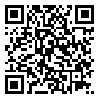BibTeX | RIS | EndNote | Medlars | ProCite | Reference Manager | RefWorks
Send citation to:
URL: http://jhosp.tums.ac.ir/article-1-5452-en.html

 , Taraneh Yousefinezhadi2
, Taraneh Yousefinezhadi2 
 , Faranak Behzadi Goodari2
, Faranak Behzadi Goodari2 
 , Mohammad Arab *
, Mohammad Arab * 
 3
3
2- Tehran University of Medical Science
3- Tehran University of Medical Science ,
Background: The goal of clinical risk management is to improve the quality of health care organization’s services and to ensure patients' safety. Thus, this study has identified and evaluated the potential failures by Failure Mode and Effects Analysis (FMEA) approach to eliminate errors occurrence of an Intensive Care Unit (ICU) in a hospital in Tehran city.
Materials and Methods: This study is a descriptive one in which data were gathered qualitatively by direct observation, document review, and Focus Group Discussion (FGD) with the process owners in an Intensive Care Units (ICUs) of a Tehran non-governmental hospital in 2014. According to FMEA method, quantitative data analysis was carried out based on failures’ Risk Priority Number (RPN).
Results: By FMEA, 378 potential failure modes in 180 ICU tasks were identified and evaluated. Then, with 90% confidence, 18 failure modes with RPN≥100 are identified and analyzed as non-acceptable risks totally.
Conclusion: Identifying 18 failures as non accepted risk from identified 378s, and identifying causes, analyzing and then suggesting correction actions reveals the FMEA high capability to identify, evaluate, prioritize and analyze potential failure modes in a such complex and critical hospital ward(ICU).
Received: 2015/02/3 | Accepted: 2015/05/13 | Published: 2015/08/19
| Rights and permissions | |
 |
This work is licensed under a Creative Commons Attribution-NonCommercial 4.0 International License. |



